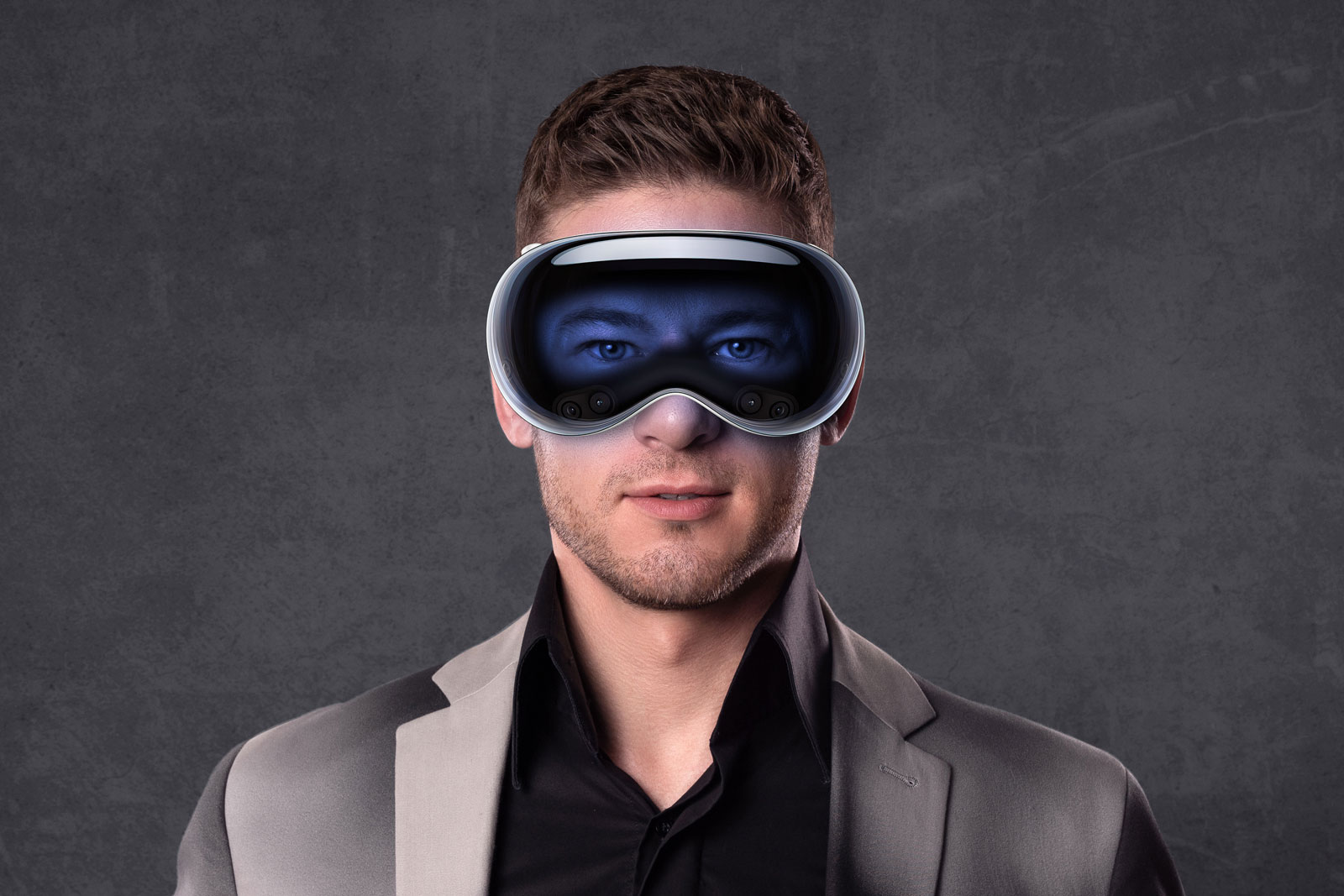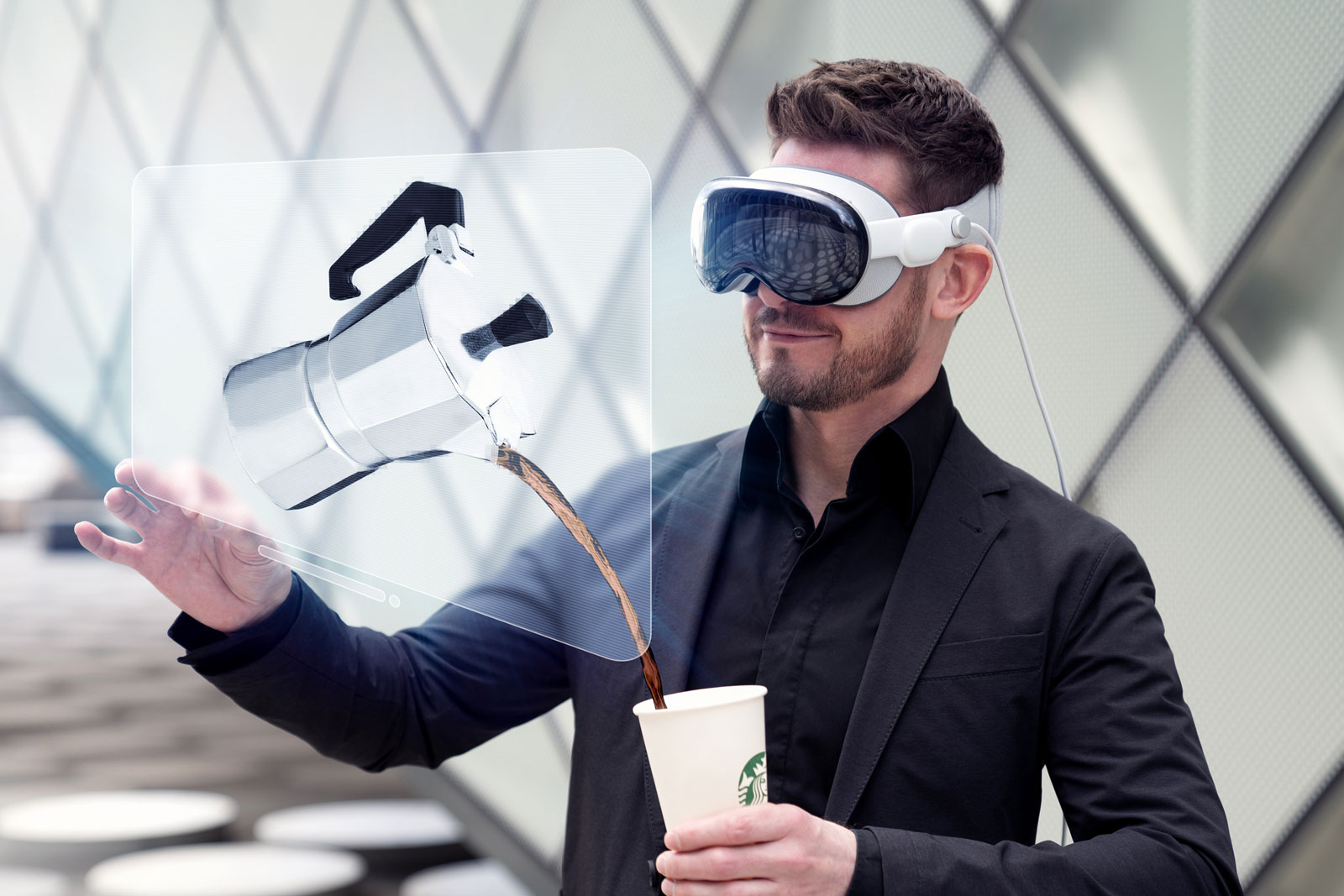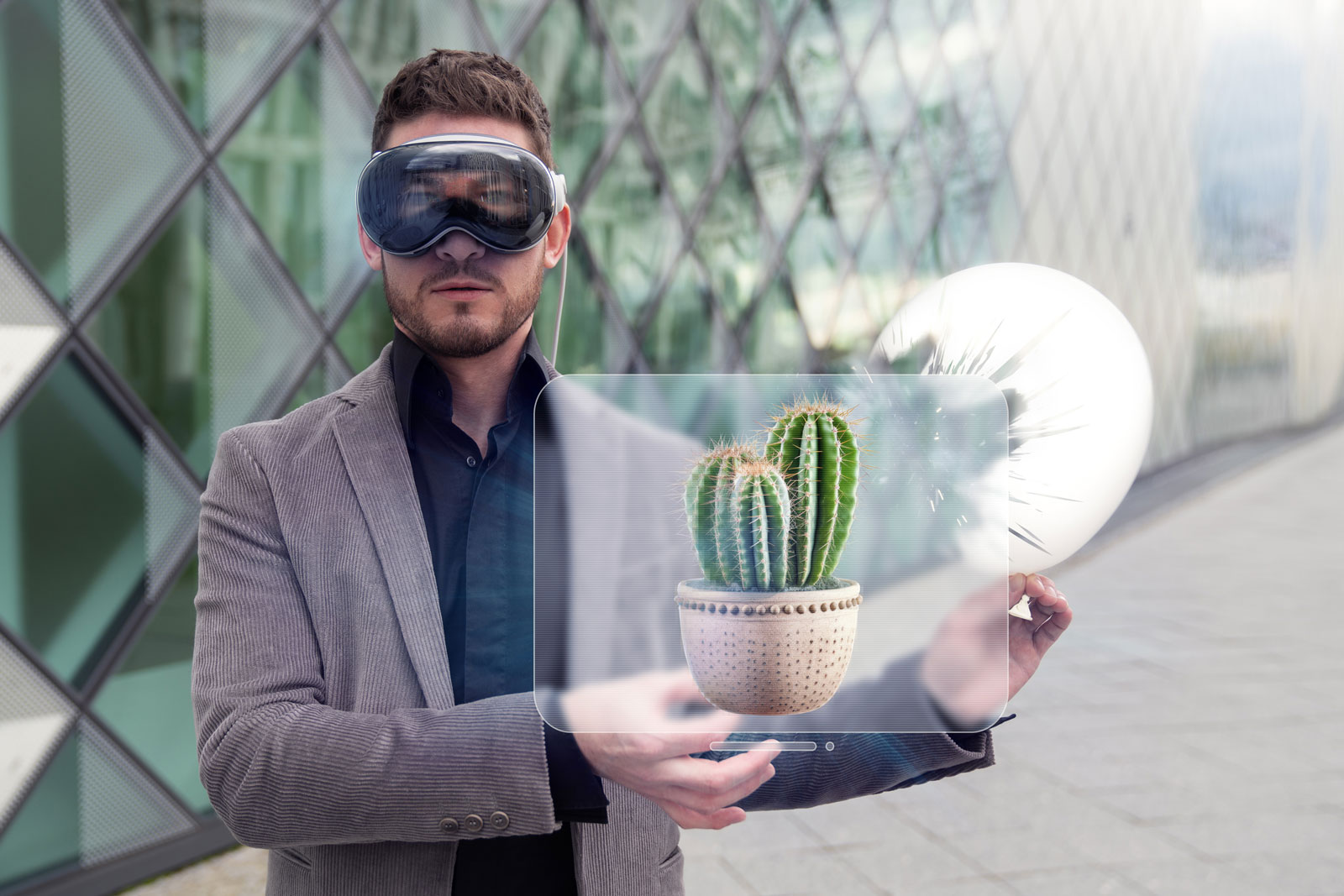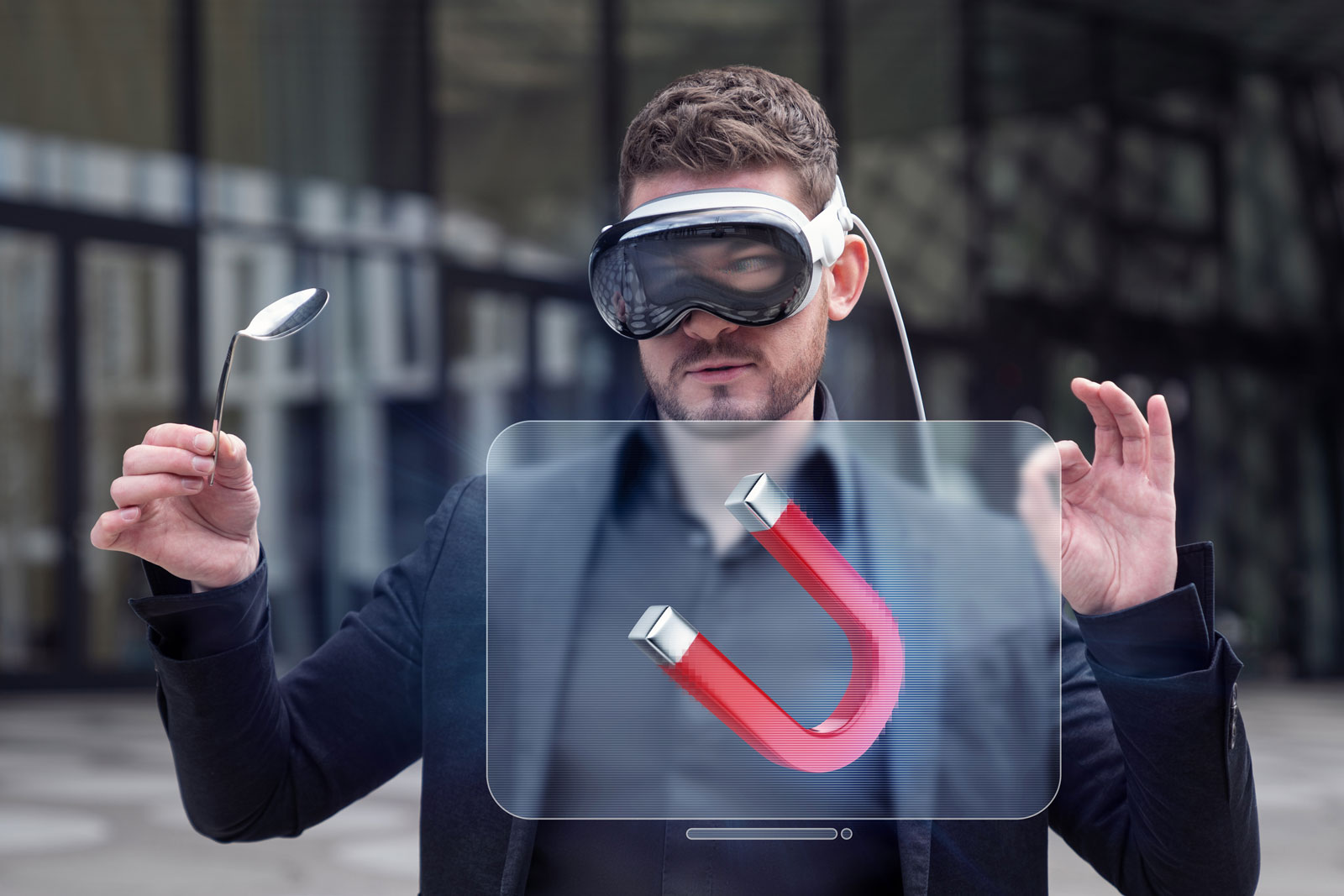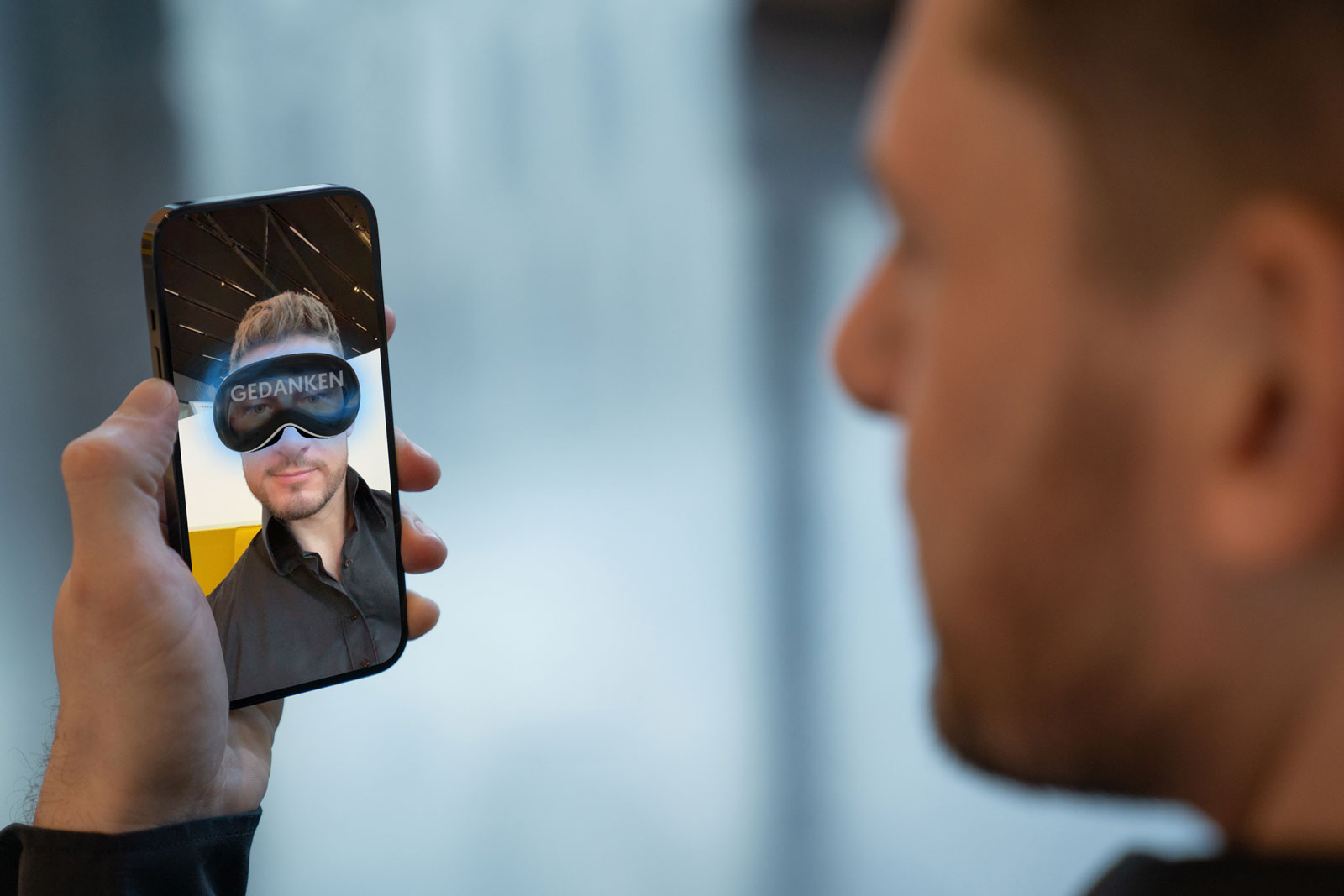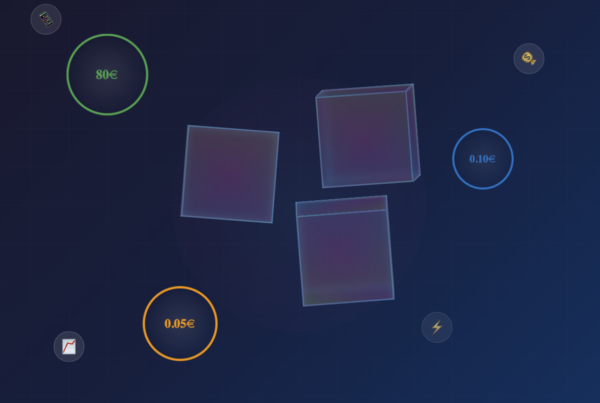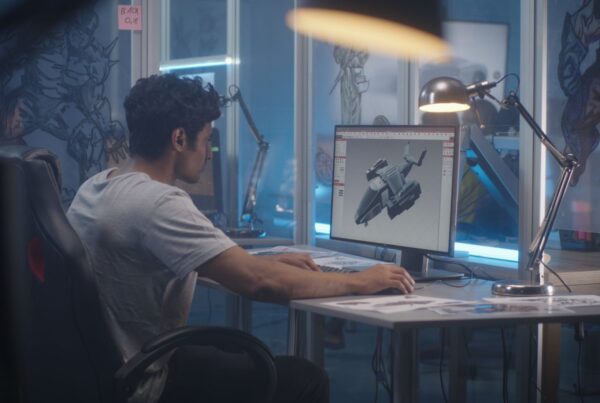Apple’s “Vision Pro” headset opens up a completely new way of using computers. And apart from that, the headset can also be used excellently in the entertainment sector, as our customer Andreas Axmann proves! He is one of the few digital entertainers in the world and has already integrated the Vision Pro into his shows. He impresses his audience with virtual wonders at events, congresses and conferences. The augmented reality application from Mazing plays a special role in this.
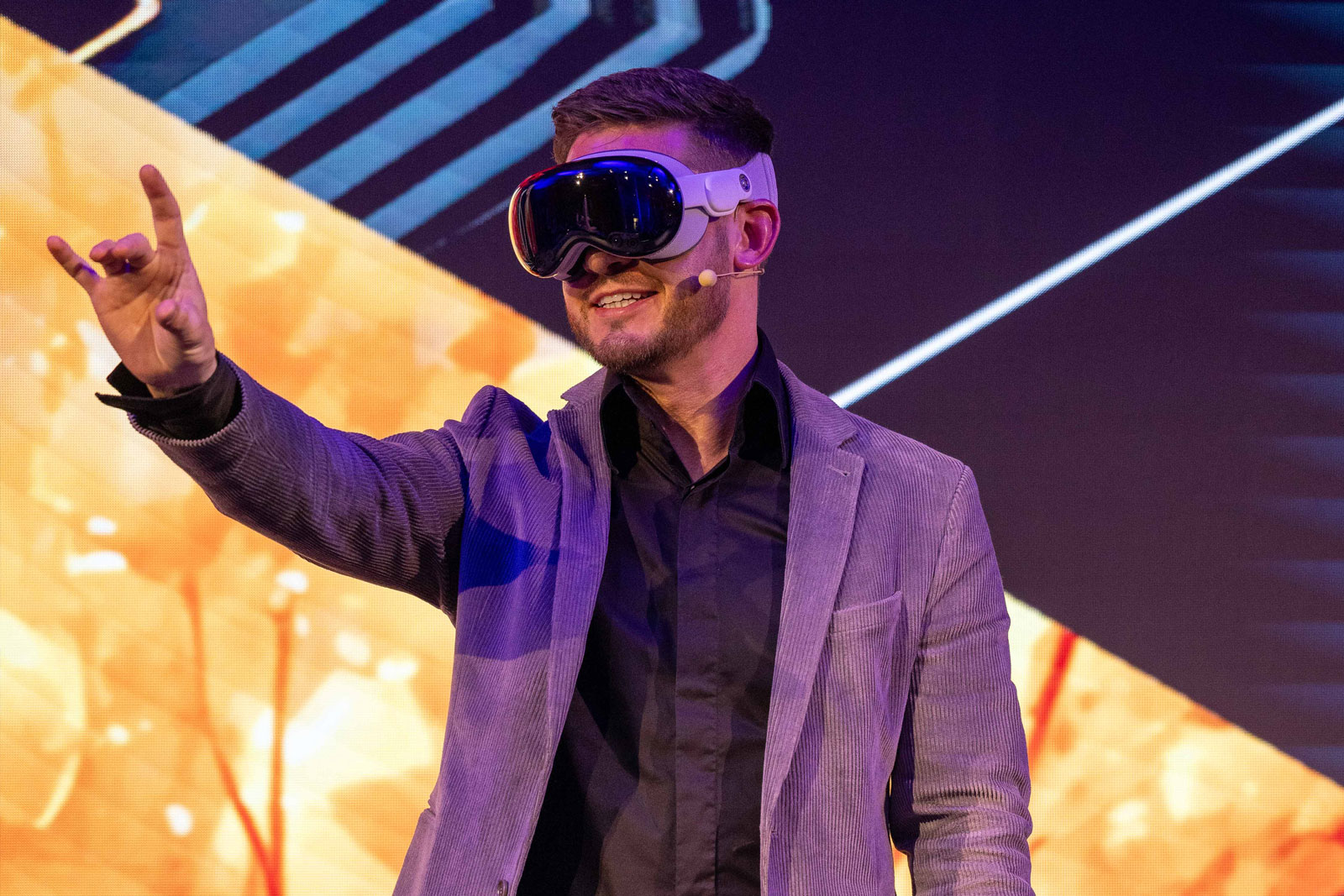
Terms relating to the Apple Vision Pro
Apple describes working with the Vision Pro as “spatial computing”, while other manufacturers often use the term “metaverse”. However, the latter term can be off-putting, which is probably why Apple has chosen a different term. Essentially, Vision Pro is a combination of AR (augmented reality) and VR (virtual reality), which is why it can also be referred to as XR (extended or mixed reality).
Fascinating functions of the Vision Pro
The Apple Vision Pro offers unimagined possibilities for the future, even in the field of live entertainment. When you wear the headset, you first see reality, which is recorded live by cameras and transmitted to small displays in front of your eyes. The slightly offset images on the two displays create a three-dimensional space. Apps appear just like on a conventional mobile device, but floating in space and freely positionable. It is as if you were entering a computer. Apps specially developed for the Vision Pro make it possible to work on fully spatial objects or swap reality for a virtual environment.
About the images: The combination of virtual and real content creates a new reality that amazes the audience.
Innovative entertainment with the Vision Pro
As a “media magician”, Andreas Axmann specializes in entertainment with digital technology and uses Apple’s Vision Pro in a magical way. He has thus developed a new form of magic. His previous magic with the iPad was based on the fusion of real and digital effects. With the Vision Pro, he now combines real and virtual elements. Things that only he can see through the headset still affect reality. Viewers can follow what he sees through the Vision Pro live on a screen behind him. For example, he can make a video call in which a friend tries to light a real candle on stage with a lighter. As if by magic, the candle actually lights without anyone touching it. This is contemporary entertainment!
Use of augmented reality from Mazing
Augmented reality as entertainment with the Apple Vision Pro can be used in a variety of ways. In his shows, Andreas Axmann combines the Vision Pro with artificial intelligence. He appears to read the thoughts of the audience by displaying imaginary words as augmented reality in the headset. Thanks to Mazing, each individual in the audience can also read thoughts interactively with a version of the headset. Using a QR code that is shown during the show, each audience member can use their smartphone camera to make it look as if they are wearing the Vision Pro themselves. This basically works via the “Virtual Try-on” application. But for perfect entertainment, Mazing goes one step further here: suddenly a word that someone else in the audience has only thought of becomes visible to all viewers in the virtual Vision Pro!
To the pictures: On the left, Andreas Axmann reads the thoughts of a spectator with the Vision Pro. On the right is the perspective of the audience, who become part of the experiment thanks to the Mazing application.
Success through entertainment
How can you reduce the typical skepticism towards new things among employees? And what can be done to arouse enthusiasm and curiosity for technologies such as Vision Pro?
Many innovations have come about in this way: Successful technology entrepreneurs got excited about computer games in their youth, hacked software and explored computers with a tinkering and pioneering spirit before coming up with ingenious ideas.
Apple’s Vision Pro is a good example of technologies that were initially ridiculed. The big three-dimensional apps are still missing, which first have to be created by software developers. Currently, the headsets are mostly used with the existing two-dimensional apps. Many users use the Vision Pro for games and digital entertainment. Wearing the headset still seems unusual in everyday life, but this will change quickly.
Andreas Axmann’s message is to cultivate a sense of wonder within the company. As we grow up, we have largely forgotten how to be amazed. However, if you approach new technologies such as Apple’s Vision Pro with childlike curiosity and engage with them in a playful and creative way, this can lead to great success!
Summary
The Apple Vision Pro offers a new way of using computers and entertainment. Digital entertainer Andreas Axmann integrates the headset into his shows, impresses at events with virtual experiences and combines real and virtual elements to redefine magic. Apple calls the technology “spatial computing”, a mixture of augmented reality (AR) and virtual reality (VR), known as extended reality (XR).
The Vision Pro shows reality through cameras on small displays, with apps appearing three-dimensionally in space. Axmann uses this to virtually light a candle, for example. The AR application Mazing enables viewers to participate interactively in the shows.
Axmann demonstrates how initial skepticism towards new technologies can be overcome through playful and creative use, leading to great enthusiasm and success. Ultimately, augmented reality as entertainment with the Apple Vision Pro is definitely the future.


